Kawai CA49 Review
We rated the Kawai CA49 8/10. This piano is designed for intermediate players and up. While this instrument is considered a lower-level Kawai model, the CA49 suits the needs of many players. The demo songs and lesson functions will serve those who are still honing their skills, while more advanced players will appreciate the virtual technician- A feature that allows you to adjust sounds to your exact liking. While we wish the CA49 had Bluetooth audio, it’s still a great home piano for many.
$2,300.00
We rated the Kawai CA49 an 8/10. This piano is designed for intermediate players and up. While this instrument is considered a lower-level Kawai model, the CA49 suits the needs of many players. The demo songs and lesson functions will serve those who are still honing their skills, while more advanced players will appreciate the virtual technician- A feature that allows you to adjust sounds to your exact liking. While we wish the CA49 had Bluetooth audio, it’s still a great home piano for many.
Overview

Kawai’s CA (Concert Artist) line of digital pianos begins with the CA29. Then we move up the scale (pardon the pun) to 49, 59, 70, and finally 99. As you go up through the model numbers, the technology behind the sound and the keyboard action increases in sophistication and realism. The Kawai CA49 comes in Rosewood and has a satin white option.
Even though it’s a lower-level piano, the Kawai CA49 is built for serious piano playing. It is encased in an attractive upright piano-type cabinet and comes with an adjustable music stand and a pedal set built right into it. The lid is a sliding one.
The display panel is 128 X 128 pixel OLED. All settings and functions are made via this.
As we’ll see, it has most of the functions any pianist would require, but the focus is very much on the quality of sound and action.
Keyboard
The keys on the Kawai CA49 are “Grand Feel Compact”, meaning that they mimic the feel of a real grand piano, even though the key length is short – hence the word “compact”. The keys are wooden and balanced with counterweights. In fact, the keys are all grade-weighted, meaning that you need less pressure to play the higher notes than the lower ones – just like on a real grand piano. There is also a “let-off” action which adds to the realism of each note.
The key tops are “Ivory Touch” finish which means they are more non-slip than the smooth shiny type – great for playing fast passages or jumping large intervals.
Although no digital piano (that I know of) feels completely like a real acoustic piano, this one does come very close, and more importantly, it’s a pleasure to play.
Sound
Kawai’s Progressive Harmonic Imaging™ (PHI) is behind the very rich sound of this piano. The sampling is incredibly deep and detailed. In fact, each note is sampled several times at different volumes so that you get a huge variety of sound color, rather than the flat monotone sound that lower-end keyboards give you. This means that when you play a note softly, it will sound pretty identical to how it would sound if you were on the acoustic it was sampled from.
There are 19 instruments in all, starting with Kawai’s two most successful concert grands, the SK Concert Grand and the EX Concert Grand. The SK is far more mellow and has a particularly rich bass which suits classical music really well, while the EX has a much brighter, less nuanced tone, more suited to pop music.
Additional instruments include Upright Piano, Studio Grand, Studio Grand 2, Mellow Grand, Mellow Grand 2, Modern Piano, Classic E.Piano, Modern E.Piano, Jazz Organ, Church Organ, Harpsichord, Vibraphone, String Ensemble, Slow Strings, Choir, New Age Pad, Atmosphere. Generally speaking, the keyboard sounds are top-notch and the strings, choir, and pad are less impressive.
The speakers are 20W X 20W for a total of 40W which is ample for any home setting and probably enough for some small public venues. There are 4 speakers in total, two low down and two on the top of the piano.
There is a Spacial Headphone Sound setting that reproduces the best surround sound for the player using headphones. This means that you get the fullest, richest sound even though you’re not using the speakers. Make sure you invest in good quality, comfortable headphones if you plan to use them a lot.
The Kawai CA49 also has a “Low Volume Balance” function. When you want to play with a low volume rather than using headphones, you can select your preferred balance between loud and soft notes so that you still have well-proportioned dynamics.
Features
Virtual Technician
When you play an acoustic piano, there are many micro-variations in sound stemming from the sound of those particular strings with that particular soundboard, how soft or hard the hammer materials are, how smoothly the wooden parts move, and so on. When you put all that together, it forms the sound and character of that piano.
The Virtual Technician function of the Kawai CA49 gives you the ability to change the nuances within the piano sound to allow you to customize it to what you really want, or need for a particular project. For instance, you might want to hear the dampers in a very soft piano piece or want a lot more string resonance.
The Smart Mode has 10 presets that make the piano sound really good out of the box. This is the “Normal” setting. “Noiseless” means there is just the basic piano sound and no mechanism or string resonance noise. “Deep Resonance” emphasizes the string resonance and damper sounds. “Soft” softens the hammers while increasing the resistance on the keys to producing a more muted, soft tone. “Hard” creates hard hammers for a brighter sound – good for pop and rock. “Dark” gives you harder hammers and more resistance from the keys for a deep sound. “Rich” increases both damper and string resonance and lightens the touch on the keyboard. “Historical” is a setting created to suit romantic and classical music.
Demo Songs
Each of the onboard instruments has a particular demo song so that you can hear it at its best. Some of the songs are original ones written for Kawai. The main piano – the SK concert grand – is demonstrated with Liszt’s “La Campanella” while the EX Concert Grand is shown off with the same composer’s Hungarian Rhapsody No.6. The harpsichord plays a piece of Bach and the strings play Vivaldi’s “Spring”. All these demo songs give you a good idea of what each instrument sounds like as well as the type of music they’re well suited for.
Reverb effects
A good digital piano will allow you to select the kind of “room” you want to be in (virtually, of course) by offering different Reverbs. The Kawai CA49 comes with six reverb choices which are: Room, Lounge, Small Hall, Concert Hall, Live Hall, and Cathedral.
Lesson function
The Kawai CA49 comes with lessons built into their piano so you can access them immediately without having to connect a devise and sign into an app. One of the lesson series is Alfred’s Basic Piano Lesson Library Book Level 1A and Level 1B. These lessons start by introducing how to play with each hand separately, then moves on to simple, well-known songs such as Merrily We Roll Along and Old McDonald as well as some original songs.
You can learn to play along at a slow speed and increase your tempo as you progress. There are 25 pieces by Burgmüller that you can learn. Burgmuller is known for writing pieces that improve piano technique, but they are also fun pieces to listen to and play. There are 30 etudes by Czerny – another composer renowned for writing educational music. Finally, there are Chopin’s Waltzes 1 through 19 and 106 Beyer lesson songs.
Note that the sheet music doesn’t come with the piano, so the books have to be bought separately through the publisher.
Metronome
The built-in metronome can be set between 10 and 300bpm for practicing with a steady beat. The default setting is a quarter beat set at 120bpm. However, it’s possible to select and save a different value so that it becomes the startup default. The time signature can be set at 1/4, 2/4, 3/4, 4/4, 5/4, 3/8, and 6/8. The volume of the metronome can be adjusted and your preferred setting saved to become the default.
The metronome sound on the Kawai CA49 is a click and just one sound is available. Note that the CA59 comes with a wider variety of BPM options (including 7/8, 9/8, and 12/8 plus 100 drum rhythms to play along with which can make practicing a lot more fun and intuitive.
Transpose function
The CA49 is able to transpose the keyboard by +12 – -12 semitones. Any transpose setting you have made can be saved as default upon start-up, so if you are working on a particular song that you are always going to want transposed up or down a certain amount, you can save yourself some time by having this set as the default. (Remember to reset to 0 when you’ve finished practicing that particular song though, otherwise, everything you play will be in the wrong key!)
Having a good transpose function can be valuable to intermediate players particularly. If you’ve learned a song in a certain key and then start to accompany a singer who would prefer the song in a higher or lower key, you only need to dial in the change in your transpose setting and you can continue to play in the key you’ve practiced but the song will sound in a different key.
Fine-tune
This allows you to tune the piano by micro-amounts of 0.5Hz. The setting spans 427 – 453Hz. This is not a function that gets a lot of use, but most keyboards seem to have this function now. It can be useful if you’re playing with other players whose instruments aren’t quite in tune.
Record function
The record function allows for up to 3 songs, with approximately 10,000 notes maximum memory capacity. The songs are automatically named “Song 1”, “Song 2” etc. You cannot name them yourself. If you do a lot of recording, it might be a good idea to have a notebook (paper or digital) and keep a record of song titles you’ve recorded under which song number on the piano.
Duet mode
“Four hands” mode splits the keyboard into two sections (from note F4, which cannot be altered). This is useful for teaching purposes as the teacher can demonstrate on one half of the keyboard and the student can copy on their half of the keyboard. The right pedal works as a sustain for the higher half of the piano while the left pedal (the soft pedal) will operate as a sustain pedal for the lower half. The recording function is disabled during the use of the “Four hands” mode. Whatever instrument you have selected will sound across the piano – rather sadly, it’s not possible to have two different instruments in this mode.
Dual mode
The dual mode allows you to layer two instruments together. The default when you select this mode is piano with “slow strings”. You can easily change it to different instruments and change the balance between the instruments – for instance, you might want just a hint of strings rather than 50/50. If you find a sound you particularly like you can save it as the default.
Headphone settings
This is an unusual feature to have on a digital piano, in my experience. You can select what type of headphones you’re using and the piano will adjust for the best listening experience for you. The choices are: Normal, Open, Semi-open, Closed, Inner Ear, and Canal.
Bluetooth
The Kawai CA49 has Bluetooth MIDI – but not Bluetooth Audio. This means that you can send and receive MIDI data between the CA49 and a computer or device. But you can’t stream music from your device into the piano so it comes out of the piano’s speakers. (Later CA models include Bluetooth Audio.)
Pedals
The CA series of pianos all come equipped with a pedal set that is built right into the cabinet and connected. This gives you the three pedals standard on any modern piano. The one on the right is the most often used – the Sustain pedal. This sustains any notes you play as long as you keep the pedal down. As soon as you release the pedal, the sound will stop. The middle pedal is the Sostenuto pedal. This will sustain any notes you play as you press the pedal, but any notes you add after will not be sustained.
There isn’t a lot of call for this pedal unless you’re quite an advanced pianist. Romantic music by composers such as Debussy sometimes calls for it, and some contemporary music, but classical music doesn’t. The pedal on the left is the Soft pedal. The technical name for it is the “Una Corda” (one string). This dampens the sound so that it’s quiet and gentle. There is also not a huge call for this pedal, but it can be useful to have.
As stated earlier, when this piano is in duet mode, the left pedal operates as a sustain pedal for the lower half of the piano.
Connectivity
The CA49 comes with MIDI IN/OUT for use with MIDI cables, USB to Host to connect to a computer or device, and two headphone jacks – one is a quarter inch and the other is a 1/8th for quick connection no matter what type of headphones you have. It also has Bluetooth MIDI (but no audio).
Specifications

- 88 wooden, weighted keys with “Grand Feel Compact”, “let-off”, triple sensor, and counterweights. Ivory Touch key tops.
- The sound produced via Progressive Harmonic Imaging, 88-key piano sampling
- 19 internal sounds, including 10 different pianos.
- 192 Polyphony (number of notes able to play at once)
- The recording capability of 10 songs, 2 tracks each, up to 90,000 notes
- Lesson function – selection of three different sets of music
- Virtual Technician with Smart Mode – 10 presets and Advanced Mode
- Bluetooth MIDI, MIDI IN/OUT, 2 Headphone jacks, USB to host
- Speakers output 20W X 20W
- Weighs in at 128lbs
Who Is It Suitable For?
Beginner
Anyone who begins their journey on the Kawai CA49 will be set up for success. If a beginner learns on a digital piano of this quality when they play an acoustic, the feel and sound difference will be very minimal. (Though they might look for the switch on an acoustic, which I’ve seen children do!)
The onboard lesson function, metronome, ability to easily record and 19 different instrument sounds would enable good practice and creativity for any young beginner or adult. For children, it would be well worth investing in Alfred’s series of books that complete the lesson function use. These books are designed for children to help them learn to read music notation as well as music theory as they progress on the piano. The other two lesson sets are better suited to adult students.
Experienced and serious pianists
The Kawai CA49 is toward the medium end of digital pianos on the market in terms of price, and I’m sure the majority of pianists would be quite happy to play this one. A really advanced pianist might consider going up a step or two to the CA59, CA79, or even the CA99.
An advanced or pro pianist might consider this as a good second piano, practice piano, or MIDI controller option. Using it as a MIDI controller requires connecting it to a computer and using a DAW such as Pro Tools, Cubase, or Garageband (to name a few popular ones) in order to create music using VSTs (virtual instruments such as orchestral sounds – or even additional piano samples).
Pros and Cons

Pros
- This keyboard has an excellent touch with its weighted hammer action.
- The piano sounds are very realistic and beautiful.
- The small footprint means you can have a high-end piano without needing heaps of space.
- Easy to move with two people.
Cons
- No split mode
- No Bluetooth Audio
Quick View
| Keys | Grand Feel Compact with Let-Off, Triple Sensor, and Counterweights 88 wooden keys with Ivory Touch key surfaces |
| Touch sensitivity | Touch-sensitive – 5 levels – Light 1, Light 2, Normal, Heavy 1, Heavy 2 |
| Sounds | 19 sounds: SK Concert Grand, EX Concert Grand, Upright Piano, Studio Grand, Studio Grand 2, Mellow Grand, Mellow Grand 2, Modern Piano, Classic E.Piano, Modern E.Piano, Jazz Organ, Church Organ, Harpsichord, Vibraphone, String Ensemble, Slow Strings, Choir, New Age Pad, Atmosphere |
| Recording capabilities | 3 songs. Approximately 10,000 note memory capacity |
| Metronome | Built-in metronome 10 – 400bpm |
| Polyphony | 192 notes can be played/sustained at once |
| Speakers | Built-in speakers are 20W X 2 |
| Headphones | 2 headphone jacks |
| Accessories | Power cable, owners manual, music rest, 3 pedal set and music rest are integrated into the piano. |
| Price point | $2,300 |
| Weight and Dimensions | 128lbs
53 X 18 X 36 inches |
Conclusion
The Kawai CA49 is a very good instrument and would be a great instrument for anyone starting out with a fair size budget. Children would get a lot out of it if they are beginning to study the piano seriously. Very young children might prefer something with more variety of sounds to play around with.
The piano looks very classy and elegant and would be a lovely addition to any home. The small size and weight means two people could easily move it from room to room – unlike an acoustic piano.
For advanced or serious pianists, this is a piano that has been designed with high-level playing in mind, but be aware it’s not the top of the range and check out your options. Some of the competitors to consider in this price range are the Casio Celviano GP series or, if you have a bigger budget, the Yamaha N series and the Kawai CA59, CA79, and CA99. It’s best to research the huge range of available digital hybrids to be sure you know your options.
Ultimately, buying a piano – especially for an advanced player – is a very personal process. So, make an appointment with your local supplier to go and try any models that you think might be right for you. Making an appointment assures that they will have the correct models set up in the store ahead of your visit so that you can spend some time on each one and see which one feels right to you.
As well as playing at different volume levels, testing the different instrument sounds and trying out the functions, make sure you also play using headphones so you can hear what the experience is like on each of the contenders.
Almost certainly, you will feel a connection with one of the pianos and know that it’s the right one for you!

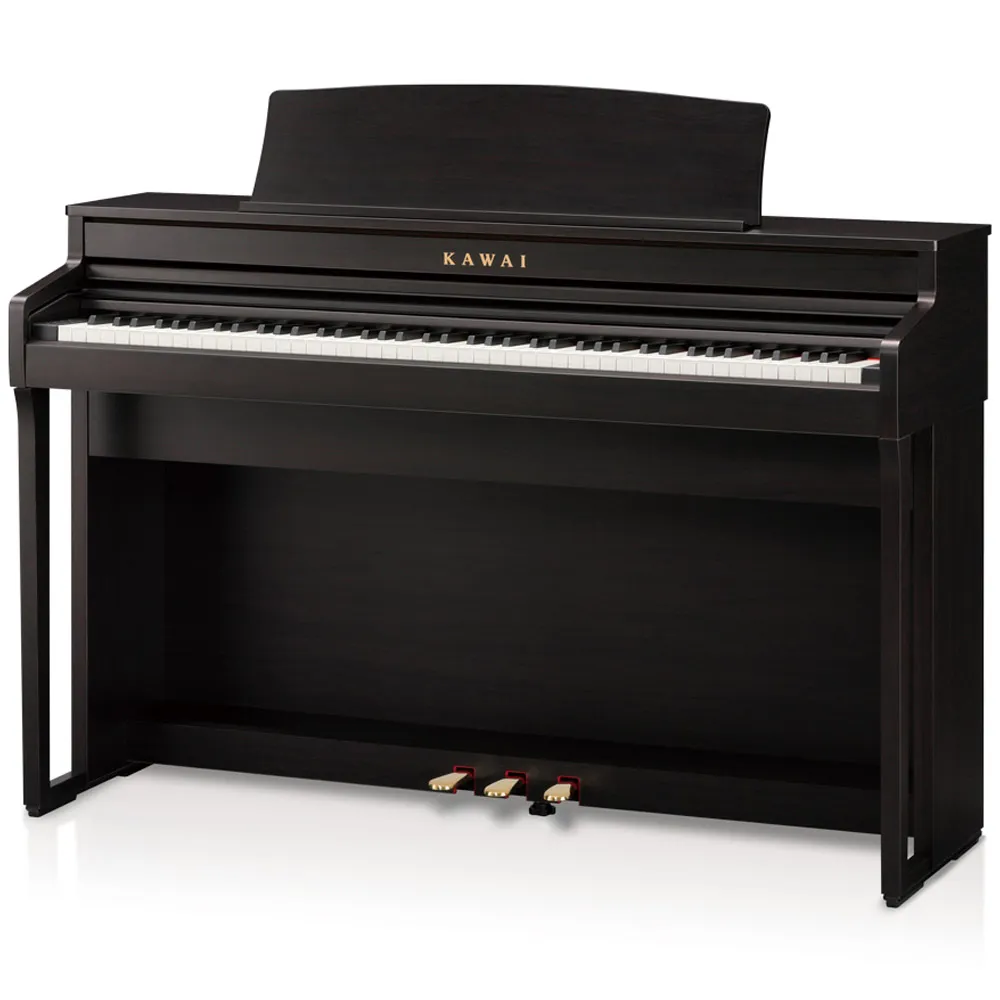
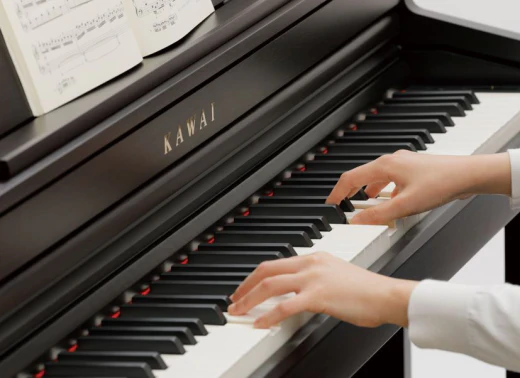

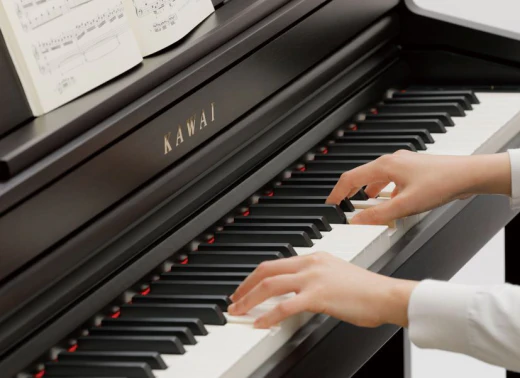
 We rated the Kawai CA49 8/10. This piano is designed for intermediate players and up. While this instrument is considered a lower-level Kawai model, the CA49 suits the needs of many players. The demo songs and lesson functions will serve those who are still honing their skills, while more advanced players will appreciate the virtual technician- A feature that allows you to adjust sounds to your exact liking. While we wish the CA49 had Bluetooth audio, it’s still a great home piano for many.
We rated the Kawai CA49 8/10. This piano is designed for intermediate players and up. While this instrument is considered a lower-level Kawai model, the CA49 suits the needs of many players. The demo songs and lesson functions will serve those who are still honing their skills, while more advanced players will appreciate the virtual technician- A feature that allows you to adjust sounds to your exact liking. While we wish the CA49 had Bluetooth audio, it’s still a great home piano for many. 




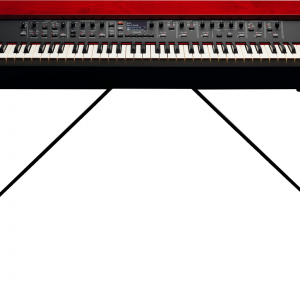

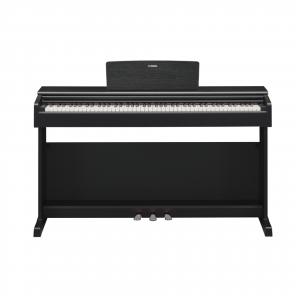
There are no reviews yet.